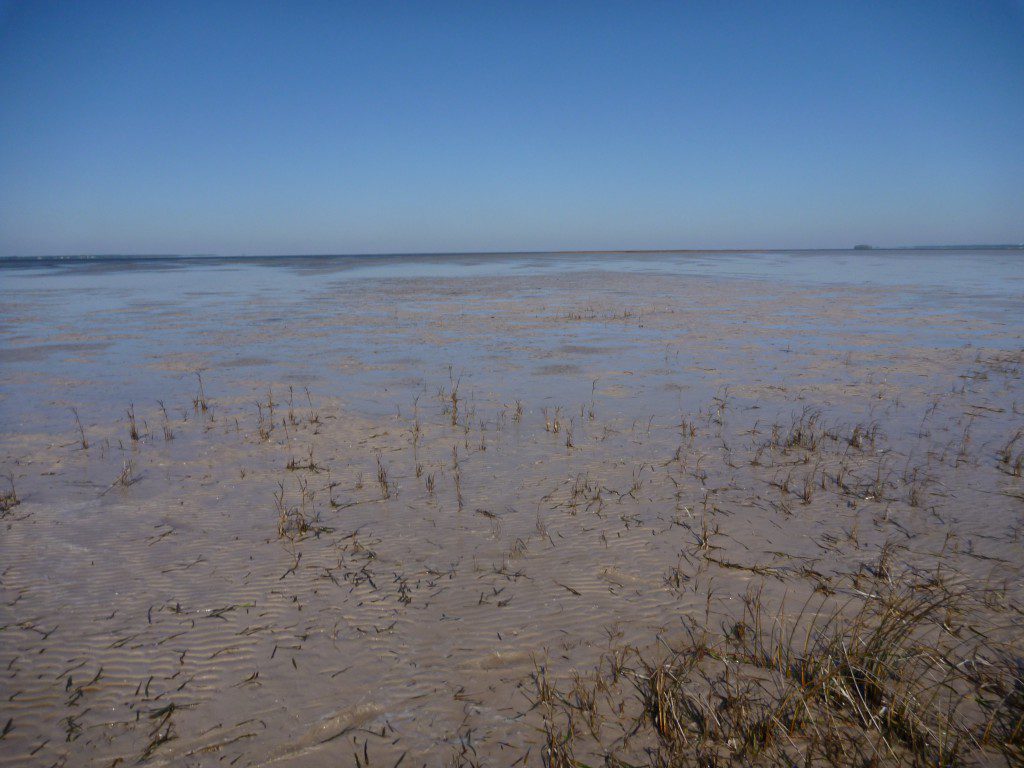Rob Diaz de Villegas WFSU-TV
St. Joe Bay is really jumping in the summer. People are everywhere; scalloping, fishing, kayaking and snorkeling. The people are mostly gone in the autumn, as they head back to work and school, and the weather is a little cooler. With less people to scare them off, you see more blue crabs, stingrays, and sharks swimming closer to the shore. It’s my favorite time of year to get footage there. When winter rolls around, the only people out on the water either have to be because they’re working (like Randall and her crew), or they’re just hardcore ecowarriors. It can make for difficult paddling in the winter (though this December is much milder than last year, when we shot this footage).
The difficulty doesn’t so much stem from the cold, though it can get cold (especially for a native Floridian who thinks Massachusetts beach water is too chilly in July). The real challenge is the wind and the tides. It makes for a surreal landscape. It’s mostly devoid of living animals, at least on the surface, but that north wind does push some interesting seagrass bed denizens onto the marsh with the seagrass wrack.
As I noted earlier, it has been milder this year. Hopefully that holds for our next few EcoAdventure shoots, which include trips down the Wacissa and St. Marks rivers. And I’ve already started planning some of next year’s shoots as well, so stay tuned!


